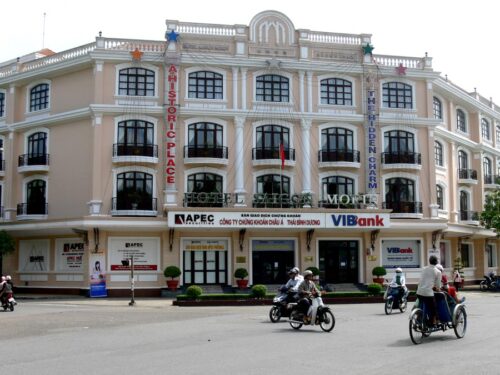The flight from Hanoi to Hue takes less than an hour. This city has some of the most interesting places in the country and some very good hotels.
Hue was the national capital from 1802 when the country was unified. Then in 1945 the emperor abdicated and a communist government was formed in Hanoi.
We stayed in a beautiful hotel in the centre of town although I did have to rescue JP from the attentions of a lady of the night! Actually we were not sure if she was properly female.
The Pagoda
Hue is on the Song Huong or Perfume river so we took a long tailed dragon boat along the river to see the sights including the Thien Mu pagoda and monastery. Each storey is dedicated to a Buddha that appeared in human form. Along side is a giant bell in its own pavilion. It is so loud it can be heard ten kilometres away. This beautiful building is the unofficial symbol of the city.
The Citadel
The highlight of Hue is the Imperial Citadel built by Gia Long in 1805 on the north bank of the river. It was modelled on modelled on the Forbidden City in Beijing. The Emperor lived here with his concubines. It has ten entrances and each gate has a watch tower. In 1968 the American bombing during the Tet offensive of the Vietnam war caused a great deal of damage which is slowly being repaired.
The Tombs
Tu Doc had the longest reign from 1848 to 1883. He had one hundred and four wives and concubines. His tomb was planned for years and it was finished by 1867, long before he died. Where he was eventually buried is a secret , to keep the royal treasures from grave robbers the two hundred servants who buried him were beheaded.
A short drive away are more tombs and statues of the Nguyen emperors who ruled between 1802 and 1945.









